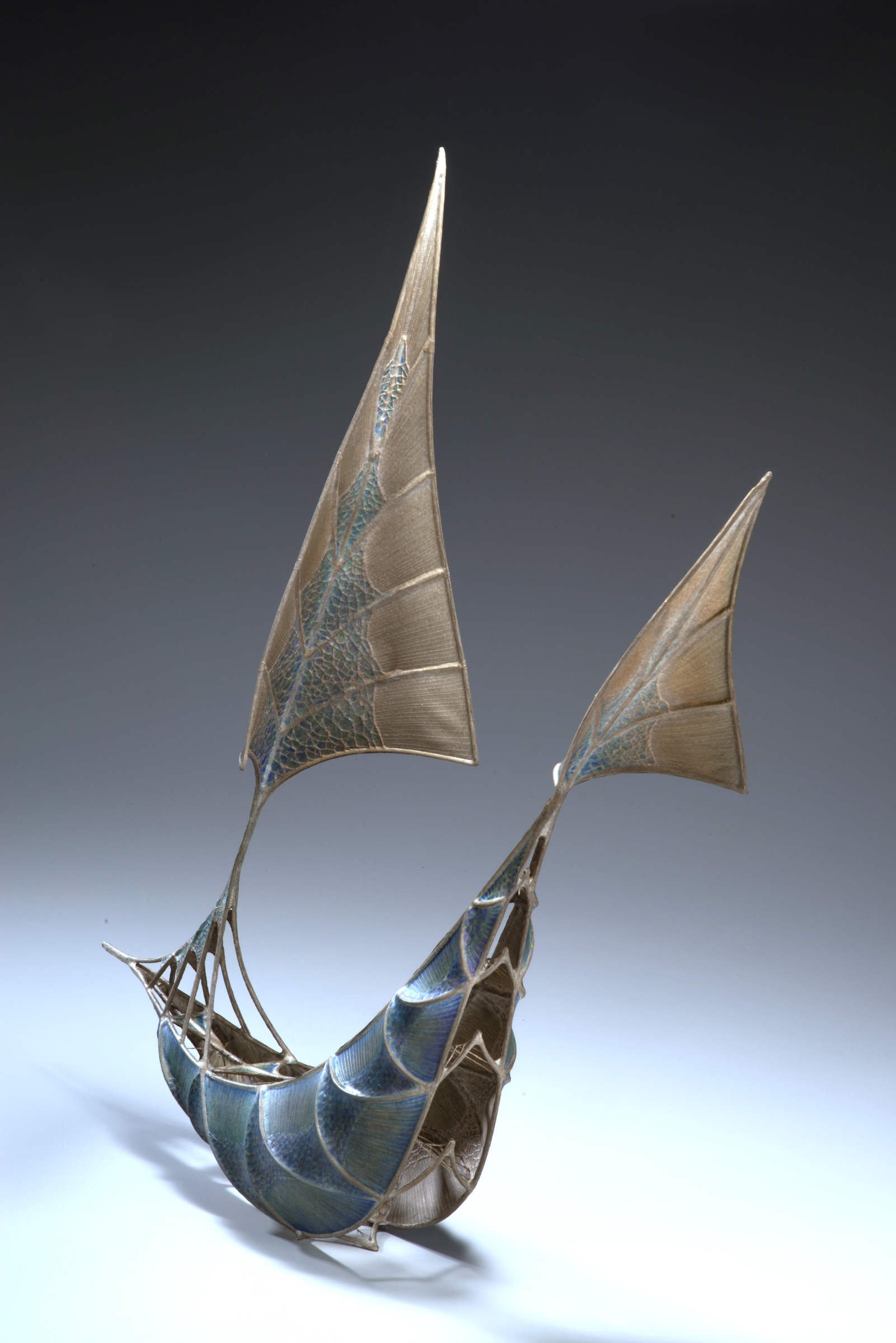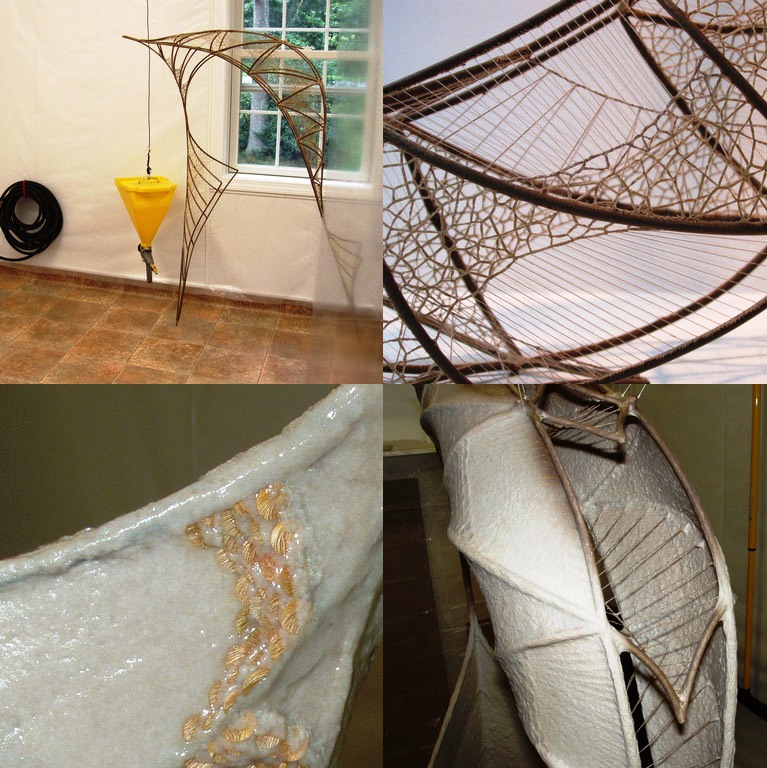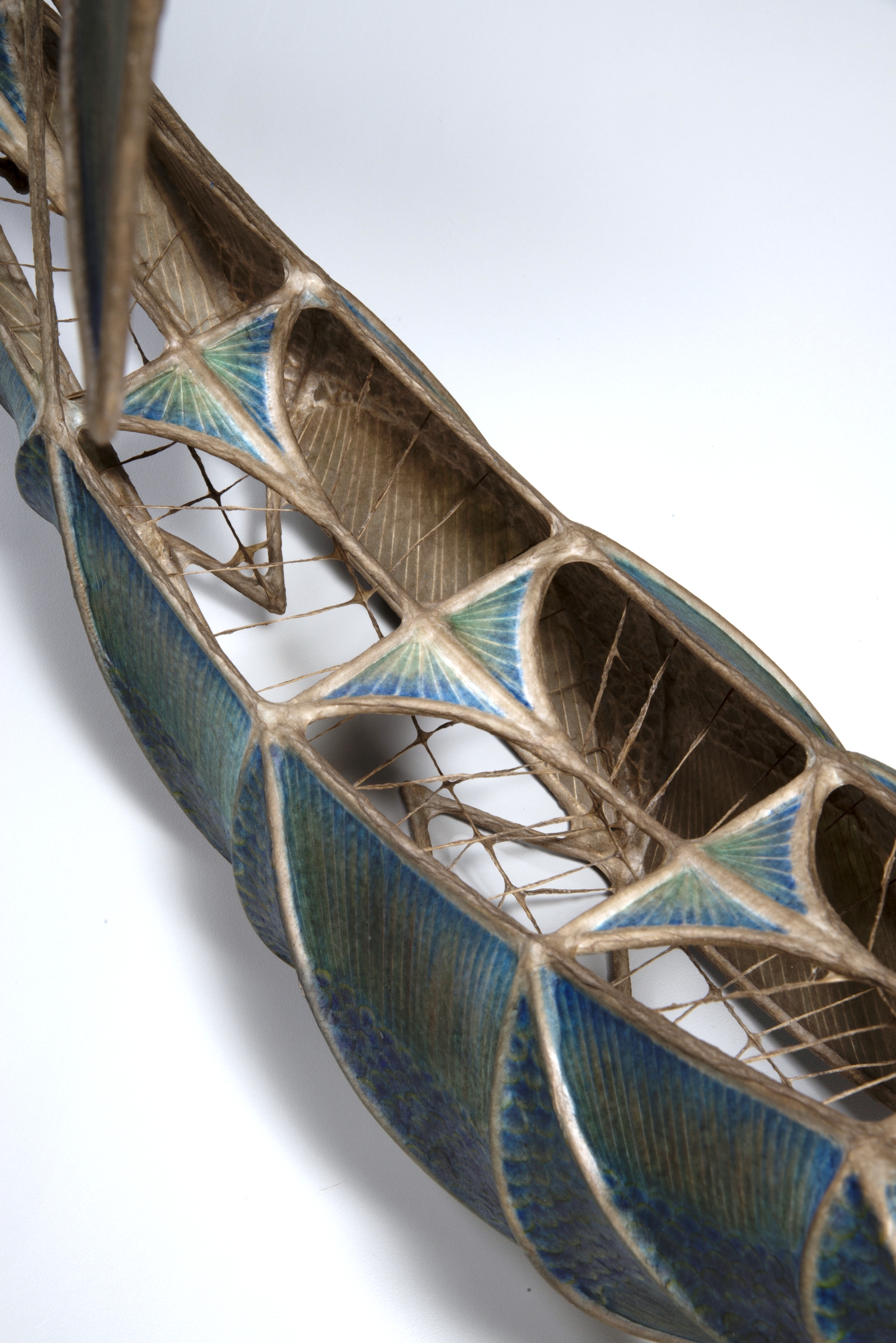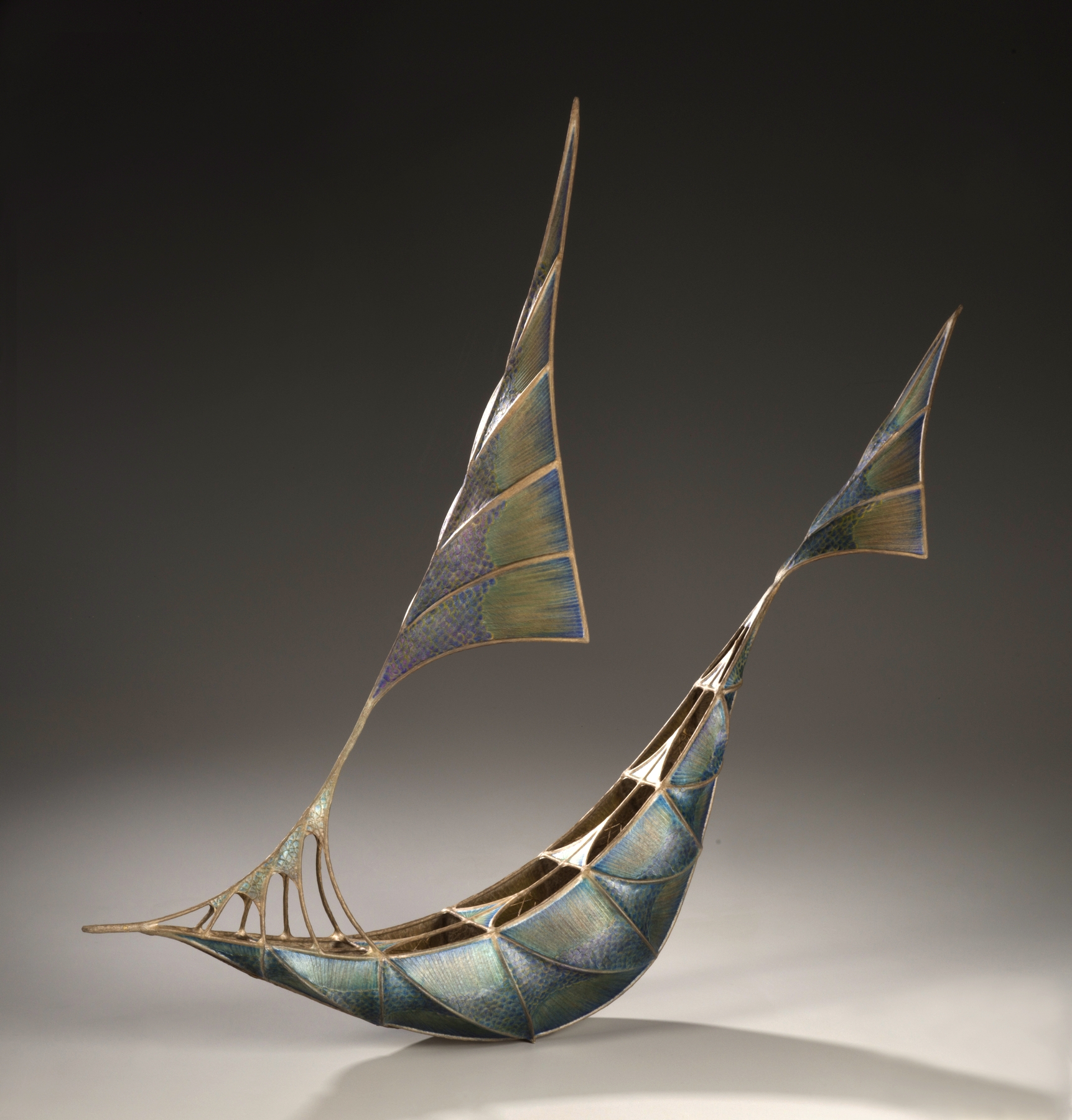About my Process
I begin by welding an armature of fine steel. I paint the armature to prevent rust from forming during the long wet pulp stage. Over each armature I weave cotton thread or hemp yarn, or sew cheesecloth, lace or gauze to form a substrate for the paper pulp to cling to. This fiber layer is carefully designed and stitched, as it is often visible under the paper.
I beat paper pulp (raw flax, cotton, or abaca) with water in my Hollander beater for several hours. The time varies with the type of pulp and the desired effect. I apply the pulp to the sculpture with a pneumatic sprayer, which has a “hopper” to contain the pulp. It is a device designed for the application of plaster to ceilings. I spray thin layers, allowing each to drain for at least two hours before applying the next; otherwise the pulp would slough off from the weight of the pulp, which is as runny as thin applesauce. Between 4 and 20 layers are needed. When a piece includes organic elements, such as the Maple Samaras in “Seabird”, I place them between layers, and they become encased in the paper. Sometimes I make sheets of wet paper, and apply these for textural effects, such as inside “Buccinidae’s Necklace”.
I allow the sculptures to dry slowly, so that the shrinkage of the paper is very even. Wet paper pulp is quite weak, but as paper dries, strong molecular bonds are formed between the fibers, making the paper strong enough to bend a poorly designed or constructed steel armature. Highly beaten flax pulp shrinks nearly 50%, creating powerful tension as it dries. The resulting effect is very translucent. Without the resistance provided by the armature, the paper would be opaque.
When I want color on a finished piece, I usually brush pure dry pigments directly onto the dry paper. I sometimes use watercolor, encaustic, or a mixture of dry pigment & varnish.
The entire process takes between 1 and 4 months, I often work on more than one piece at a time, so exact work duration for each piece is unknown. I developed this process while in graduate school at the University of Iowa. My process is described in more detail in Volume 13, No.2 of Hand Papermaking, and in Helen Heibert’s book The Papermaker’s Companion (©2000).




